Edith Stella was born on April 7, 1885, in Pella, Colorado (now known as Hygiene). Later, as the family grew, they moved to the country, about six miles east of and a little south of Berthoud. There they lived in a two-story home large enough for their entire family.
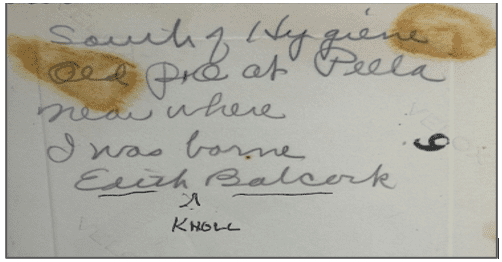
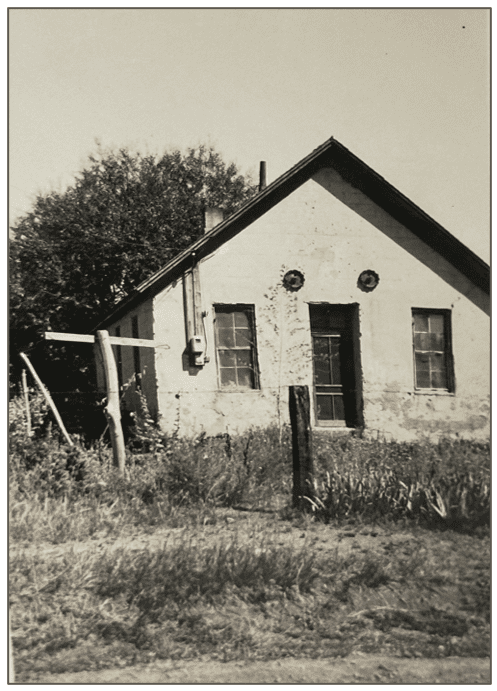
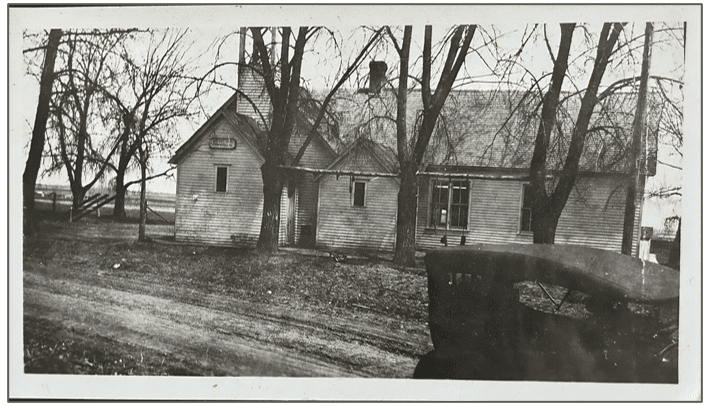
Edith Stella and her brothers and sisters attended school in Highlandlake School. Some of her siblings were born in Highlandlake.
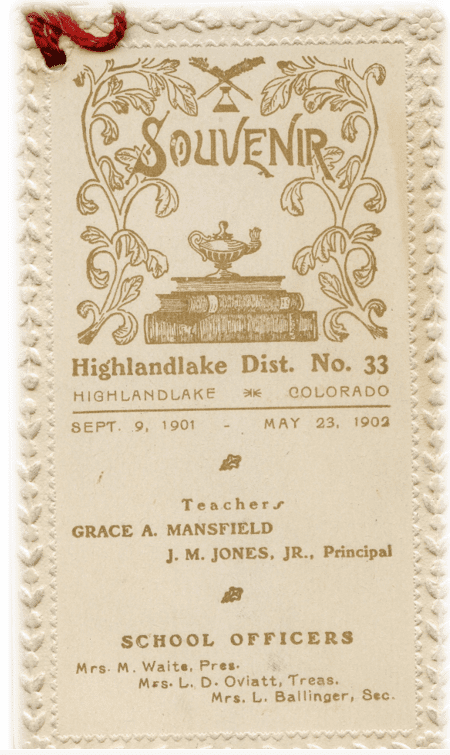
‘Souvenir’ pamphlet the students and school officers for school year 1901-1902. (Sept. 9, 1901-May 23, 1902) Edith Stella’s two brothers, Sammy Knoll, age 10 (born May 1892) and Dallas Knoll, age 8 (born April 1894) are listed as current students.
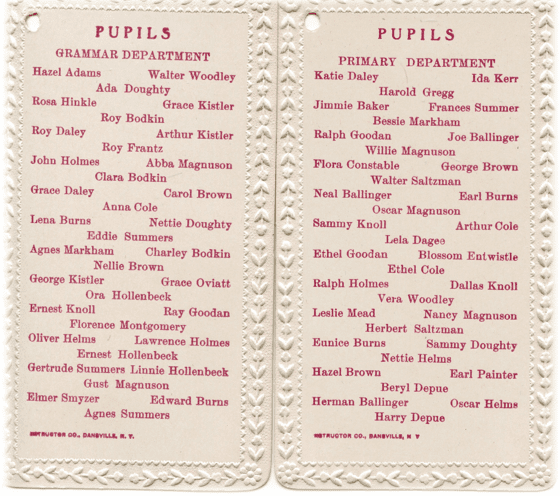
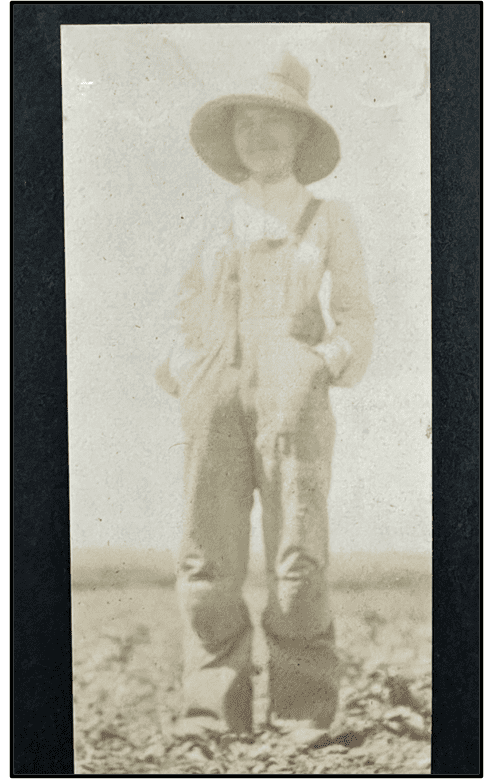
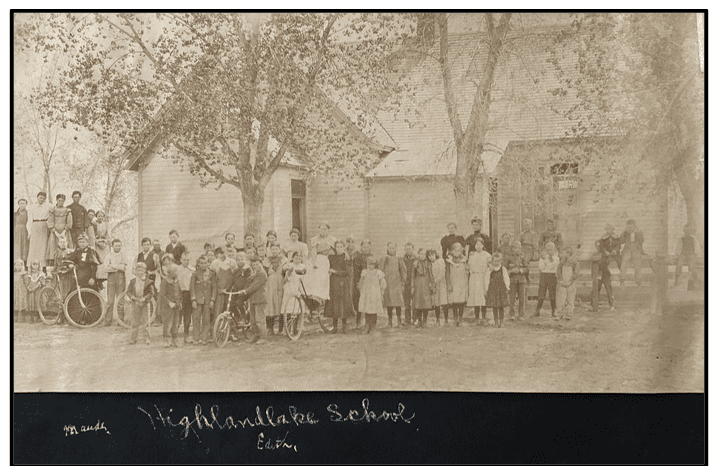
Highlandlake School with pupils Edith Stella may be the individual standing just to the right of the large tree toward the left side of photograph.

Edith Stella and her siblings used to skate along the frozen ditch used to irrigate the farms. They would skate across the lakes to get to their school which was located on the largest of the Highland lakes.
When the snow was too deep to skate on the lake, she and her sister, Nora, would ride the family Percheron, a breed of draft-horse, the several miles to school. They would stake her out to forage amongst the grass until school was out, then ride her home.

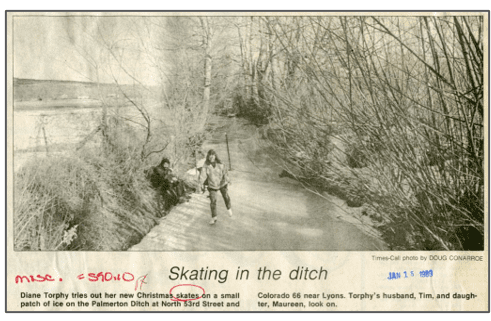
The January 20,1882 edition of the Longmont Ledger stated that Highlandlake is “one of the brightest settlements intellectually to be found in the state. They have a literacy society which has been divided into three divisions, and each one is struggling to do its best. They even tackle Shakespearean plays, “The Merchant of Venice” being on the boards.” A writer for the Greely Tribune describes the town in 1905: “From the top of a hill you would look down into the valley. You’d see two nice little lakes with cottonwood around them and over across the water a little church and a schoolhouse and some stores and some houses and little farms all around. You would know that you were near Highlandlake.”
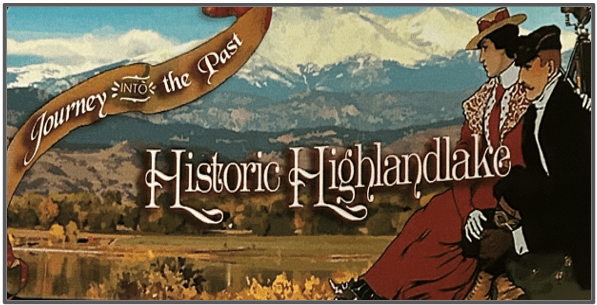
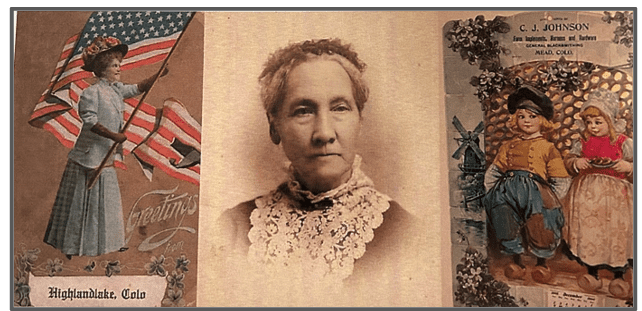
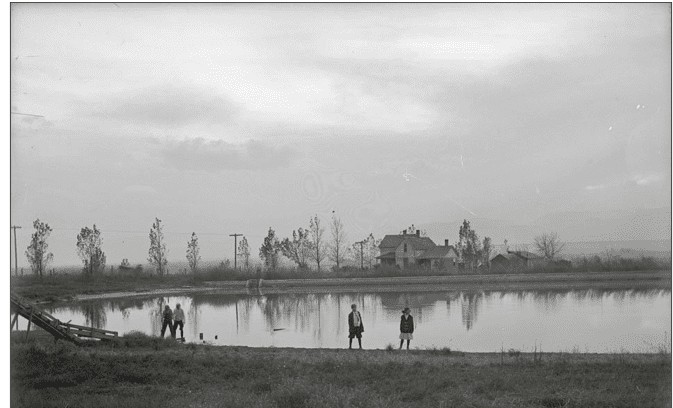
Four Highlandlake schoolchildren play along the southeastern lakeshore, probably sometime in the 1910’s. William Oviatte, who was also the first postmaster, build the house around 1882. Residents used the ramp-like structure in the foreground in the winter to load large blocks of ice cut out of the lake onto wagons.
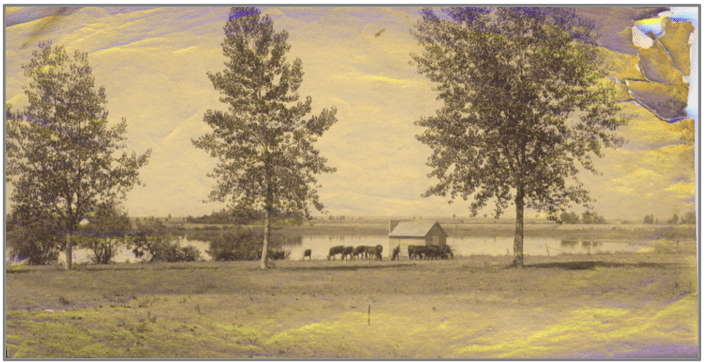
Residents harvested ice from the lake each winter and kept it packed in sawdust in the small, insulated building seen in the photograph above.
Ice harvesting began when the ice as at least eighteen inches thick. Properly stored and rationed, the blocks of ice lasted well into the fall.
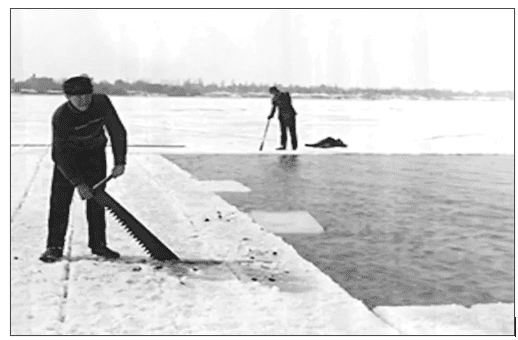
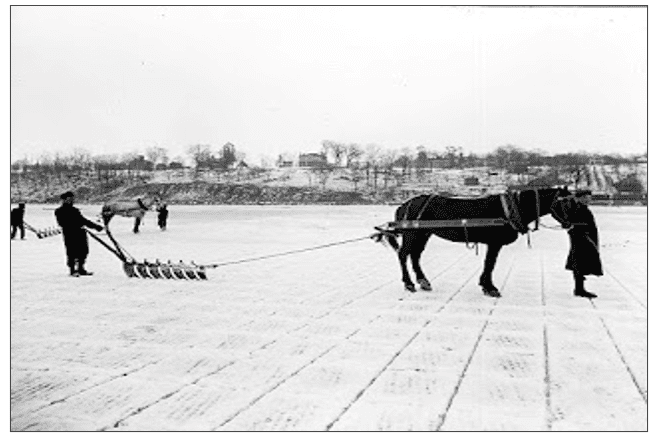
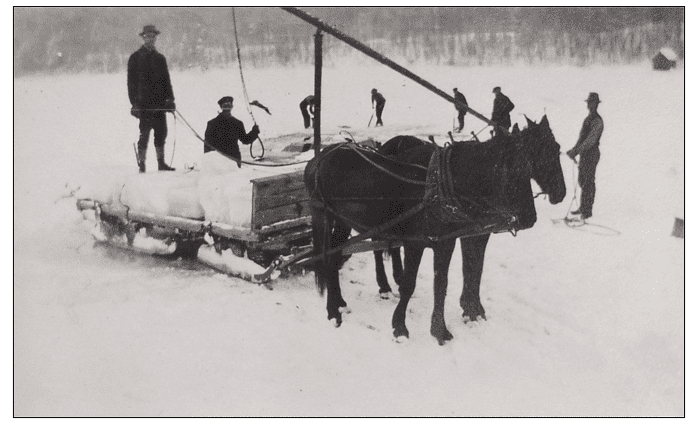
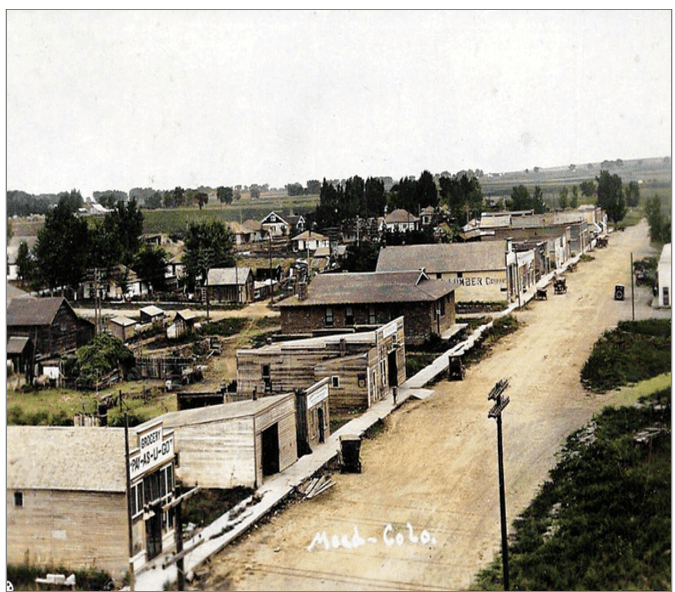
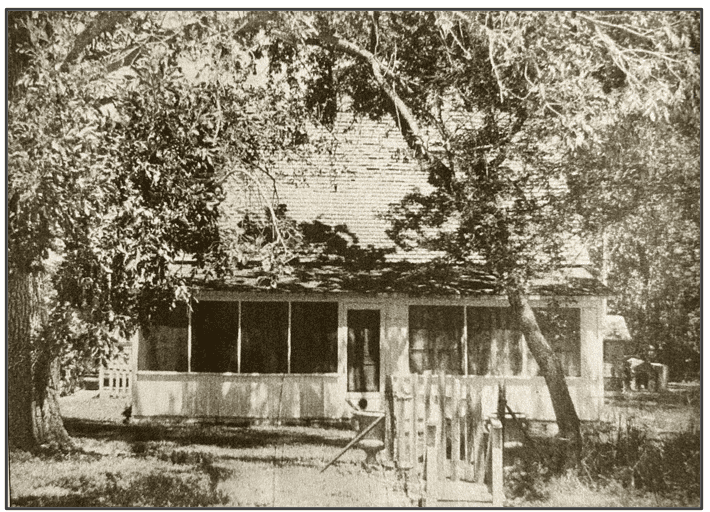
Fairview Farm Hotel, located on Longs Peak Avenue, was the only local hotel and boardinghouse in Highlandlake and was well known for its above-average service and well-prepared meals. William G. and Lizzie A. Gateley catered to the transient traveler as much as the long-term boarder, from 1901-1930, after which they sold the farm to John Minch.
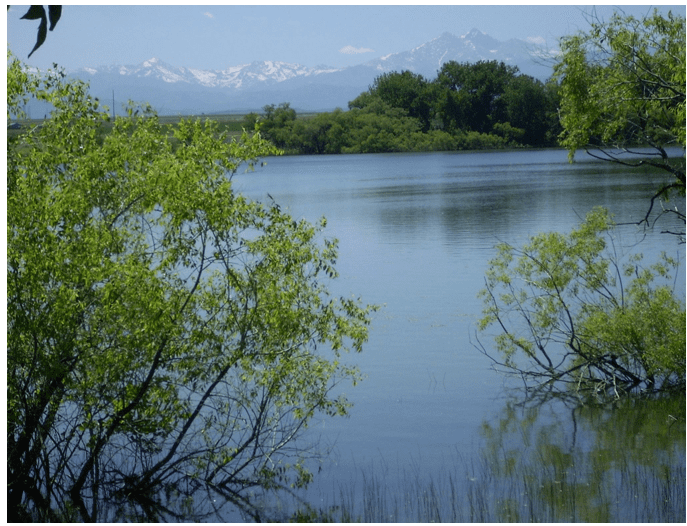
Present day Highlandlake
The Rocky Mountains are in the background
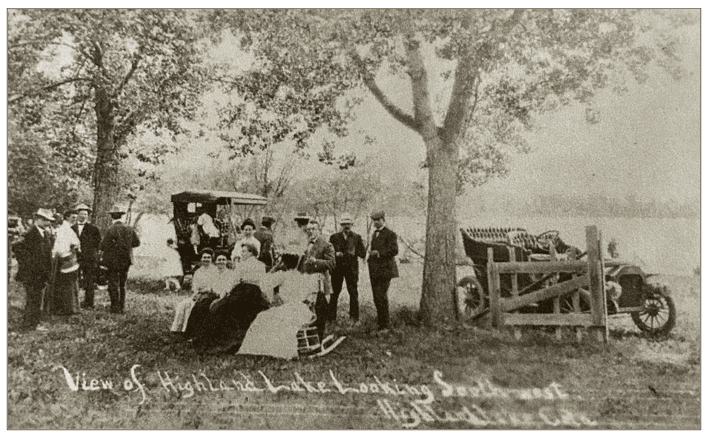
Almost from the beginning, Highlandlake took on a resort-like status. One could pitch a tent along the shore of the lake or, for a little more money, rent a small sleeping cabin or board at the Gateley’s Fairview Farm Hotel. Visitors enjoyed picnicking, boating, fishing, tennis, and croquet courts, and of course, the Saturday night dances. These picnickers often brought their own rocking chairs.
By the late 1880s Highlandlake was well established and well known. It boasted a news column which became a regular feature in the Longmont Ledger. Also, William Henry Oviatt opened the post office on November 8,1883 in his home and became its first postmaster. The post office remained in service until August 9, 1913.
After the first car arrived in Highlandlake in 1903, even more visitors took advantage of amenities at Highlandlake.
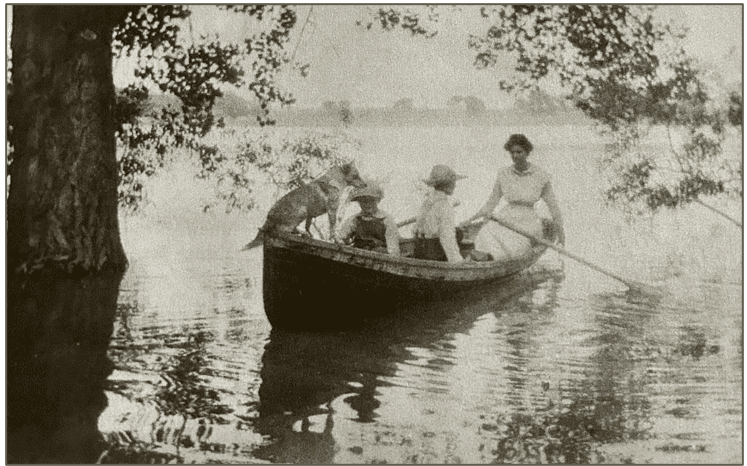
By the turn of the century, Highlandlake boasted two mercantile shops, two blacksmith shops, a barber shop, confectionery shop, meat market, fraternity hall, dance hall, school, church, flour mill and post office. Plans were being discussed about bringing the railroad to town.
The community formed a baseball team called the Highlandlake Nine and three local bands called, “The Independent Cornet Band,” “The Highlandlake Concert Band” and “The Highlandlake String Band.” For the ladies there was the Literary Society, The Woman’s Pleasure Club, Women’s Temperance Union, and a cooking club.
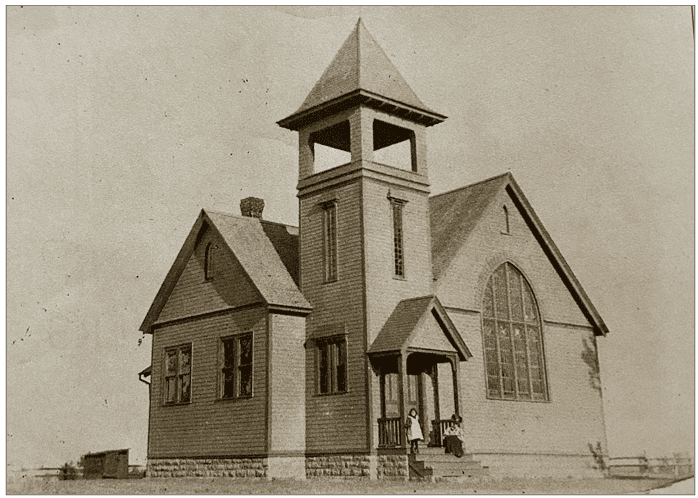
The cornerstone for the Congregational Church was laid on May 10, 1896. Construction was completed in September. Between September and December 1896, the congregation raised enough additional money to pay for wool carpeting, seating, lights, a potbelly stove, and an organ.
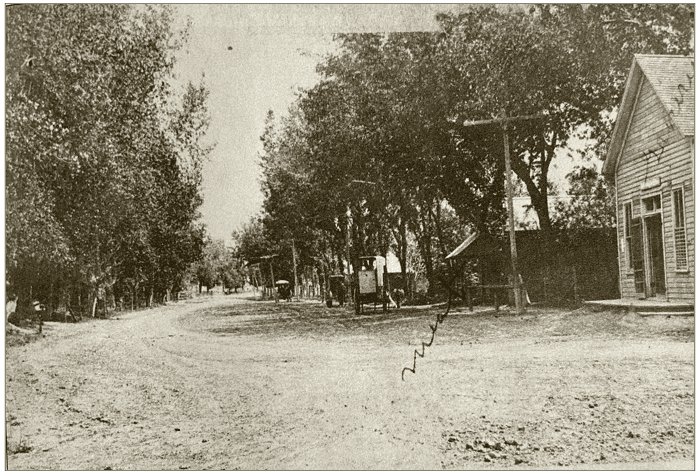
This postcard, from around 1906, shows some of the businesses originally located on the north end of Main Street. Richey’s Grocery is first, Next is the bank, and then Hemingson’s Meat Market. The barbershop, confectionary, fraternity hall, and M.S. Adams and Company were located around the corner. Other businesses in town at the time included a livery stable, feed store, two blacksmiths, and a feed mill.

This photo is of Mead's original Main St. (now County Road 7), taken about 1907-1908. Most of the new businesses were on the east side of the road as those lots were not subject to Paul Mead's dry clause.

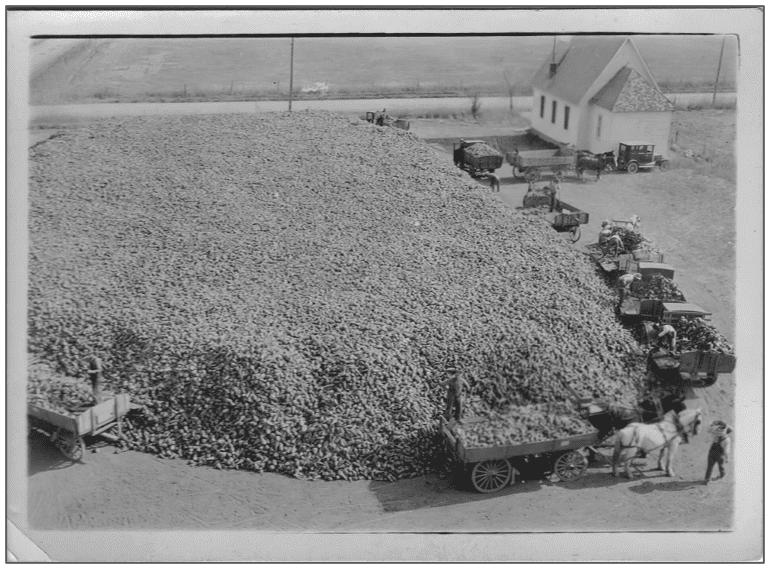




In early fall of 1905, the promised railroad bypassed the village of Highlandlake and laid their tracks one and a half miles to the east. In April of 1906, Paul Mead filed the plat for his new town. He called it Mead, after his father Dr. Martin Luther Mead MD, on whose original homestead the new town was located. It did not take long for everyone in Highlandlake to realize that Highlandlake’s future had taken a turn for the worse. In March of 1908, the new town was incorporated and to celebrate, the church and school bells rang, prompting Isabella Terry True, a pioneer Highlandlake resident, to record in her diary, “When I heard the bells ringing today for the town of Mead, it was as if they were tolling the death knell of Highlandlake.” This diary entry by Isabella Terry True is dated March 17, 1908. She was the wife of R. S. True and the daughter of Longmont’s first president, Judge Seth Terry.
By 1916 almost all the public buildings and homes had to be physically picked up and moved to Mead. Only the church and the schoolhouse remained on the once flourishing Main Street. This little church building remains and has been lovingly maintained as a community center since 1917.
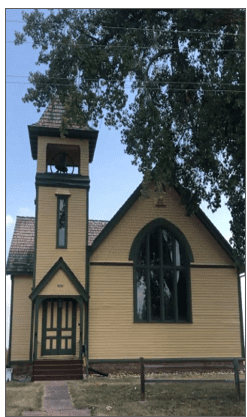
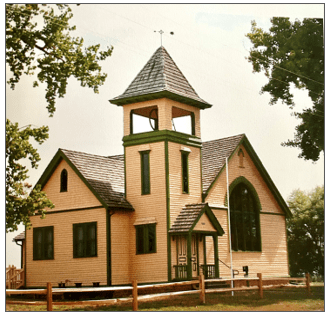
As much as Edith Stella loved living on the farm, she did not want to spend her life working a farm. She was determined to further her education. So, after finishing grammar school, Edith Stella found a position as a governess in Longmont, Colorado while she attended high school. There was no high school in Berthoud.
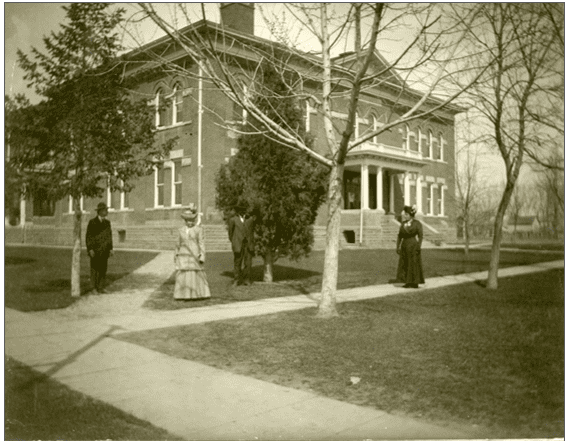
Orville wrote in his notes, “Her teacher was Dr. Splanger, an excellent instructor. It is said that Edith’s eyes sparkled whenever she gave a talk in school.”
Her daughter, Edith May, recalled years later of her mother telling her that the man of the house was always drunk and that scared her. And this helped to motivate her, as she continued to save money so that she could leave the area and attend Colorado Agricultural College in Ft. Collins.
Edith Stella is listed in the Longmont School District censuses as starting school in 1902 at age 17. Longmont High School opened in 1901. The last time Edith Stella is listed is in 1906 at age 20. She graduated in 1906. Edith Stella also appears in the 1906 City Directory, similar to a phone book, as a “student” and living at 411 Main St. By the 1908 directory (there was no 1907 directory), she is no longer listed.
Following graduation from Longmont High School in 1906, Edith Stella took on a teaching position north of Greeley, Colorado.

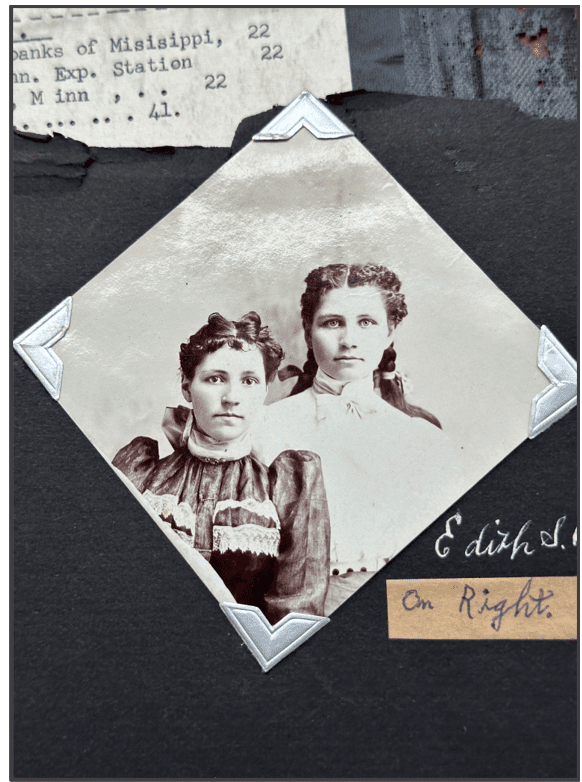

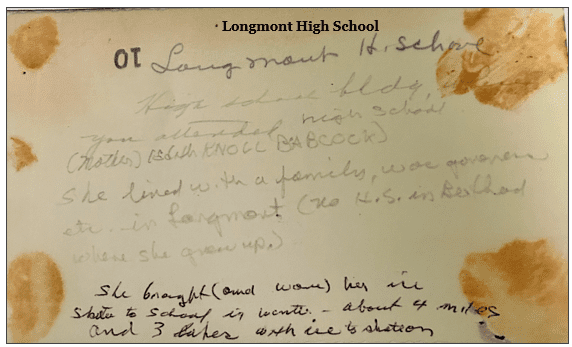

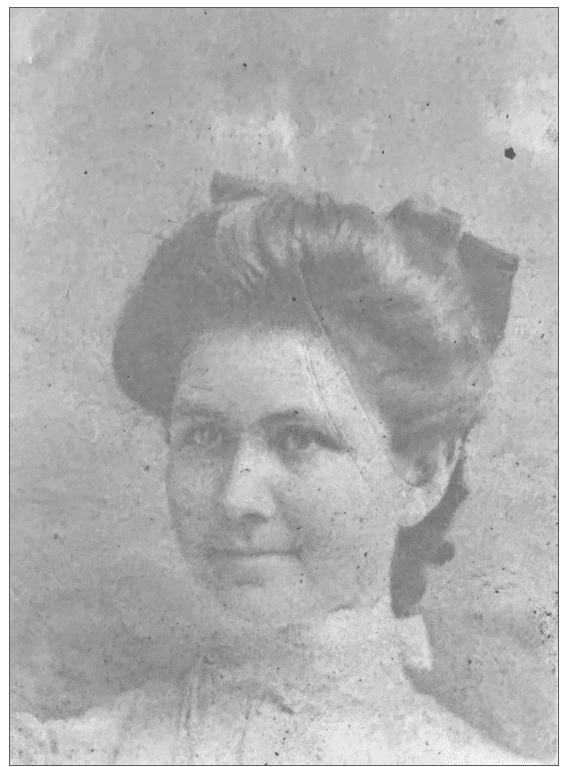
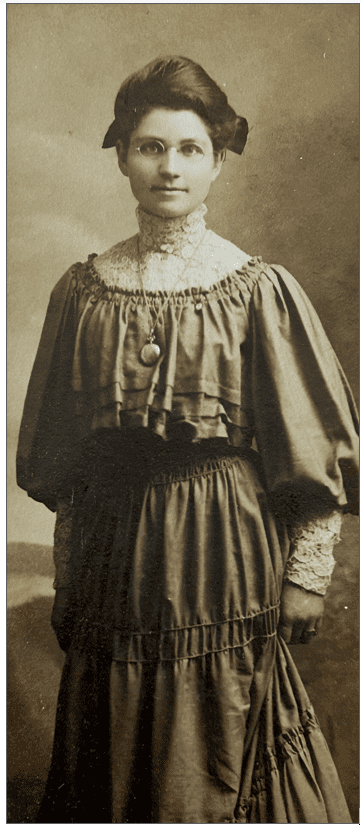
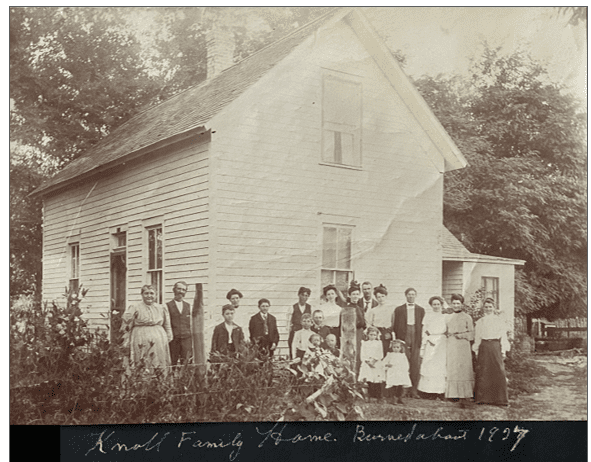
The original home was made of timber and burned in 1890. They rebuilt a second framed home which also burned. Then, a brick home was constructed in 1907.
(Note: Book 1, chapter 2 references this fire and the death of one-year-old Hattie.)

This brick home also burned, but only the top portion. Today all that remains is the ruins of a one-story home.
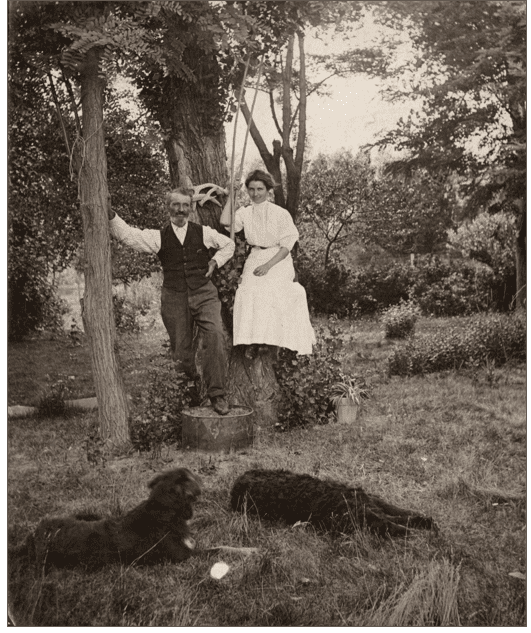
Orville Babcock wrote the following about his father-in-law Henry:
He was a farmer and a carpenter. He was slender. He was a hard worker, religious (a Dunkard), always put tools away. By trade he was a carpenter. All the tools he had were primitive in structure. He also used a broad ax, a great tool.
“The farmland was practically all taken up, so he had to take what was left, 160-acre tract having two draws. The farmland, most of it was quite sloping. In later years the seeping water from higher land irrigation brought much of the land to the alkali status. It is ruiness to the landowner. He had good water rights and an interest in one of the lakes. For many years they had good apple orchards but eventually sugar beets took over as well as brambles for the berry fruit garden. The main crop for years was corn, alfalfa, sugar beets and oats.
And referencing Henry and his wife, Susie:
Several times mother and father took the family to the mountains for a grand vacation. My how the children did collect rocks especially the pink quartz. O.G.B.
The photographs on the following pages were taken at the Knoll Ranch by Orville.
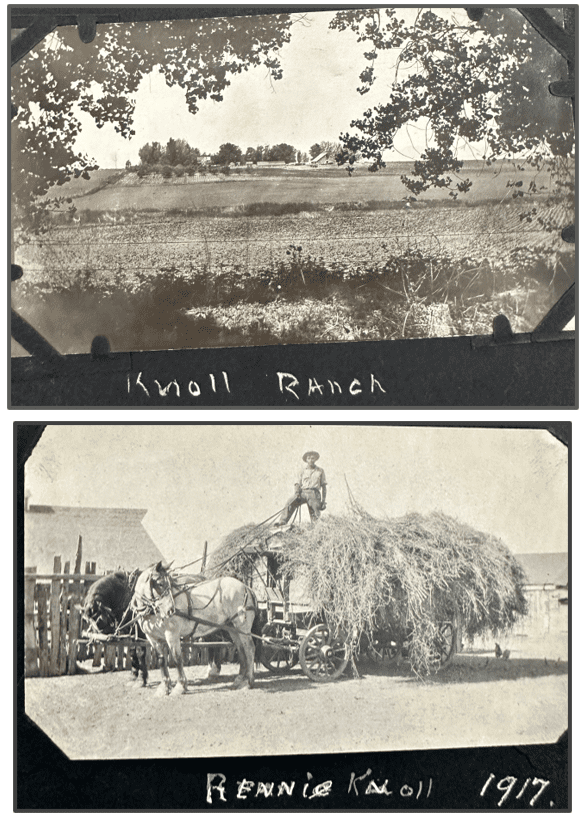

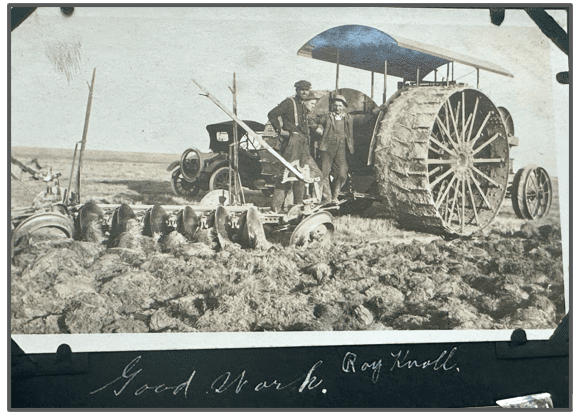

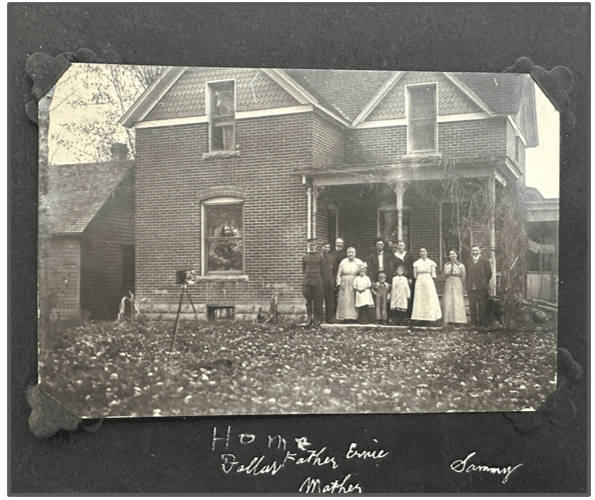
Photograph of Knoll family in front of home: Dallas in uniform, Father/Mother, Edith Stella in white dress next to sister Nora. Brother Sammy on far right. Gertrude Babcock, Edith and Orville’s firstborn, stands next to Susannah.
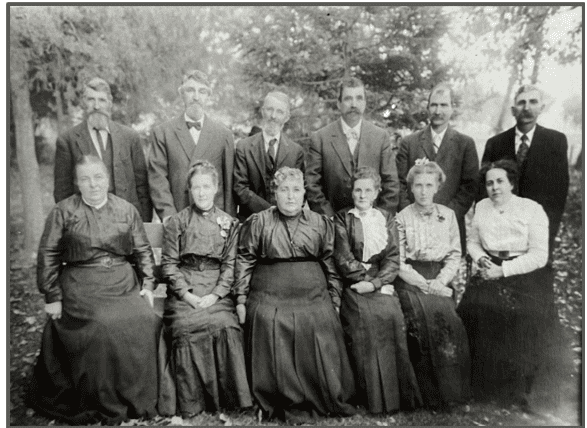

*Dallas Lloyd Knoll was awarded the bronze star for outstanding services as quartermaster of the air forces in Europe. He was veteran of 28 years in the army and served in North Africa before going to England to take over as chief of quartermaster for U.S. strategic air forces. This job entailed responsibility for food, clothing and shelter supplied air force soldiers serving in England, France, Italy and Russia. Both of his sons served overseas during WWII, Lt. Dallas, Jr. in the Pacific and Lt. Robert in England. Dallas L. Knoll is buried at Arlington National Cemetery (Section 53, Site 1001).
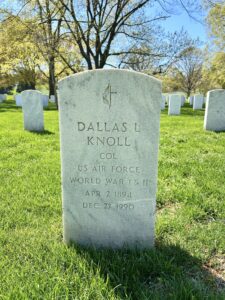


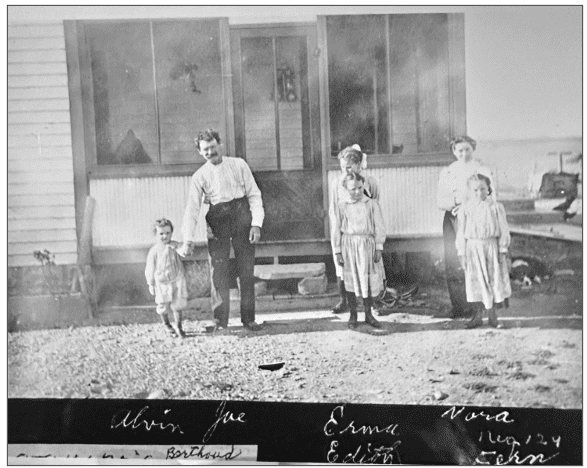
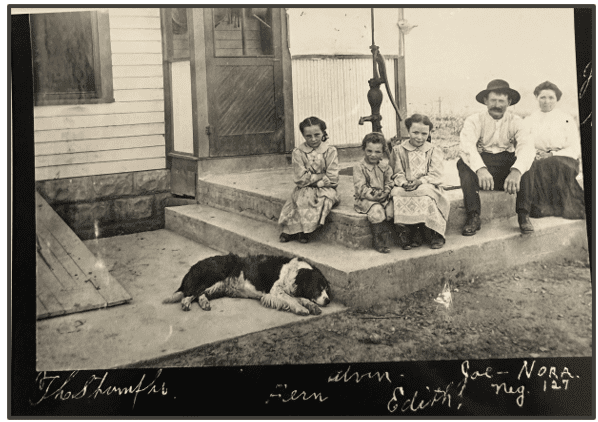
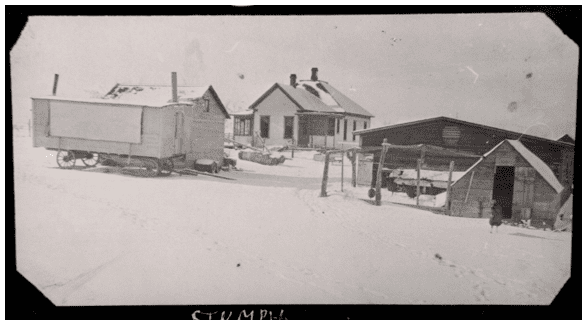
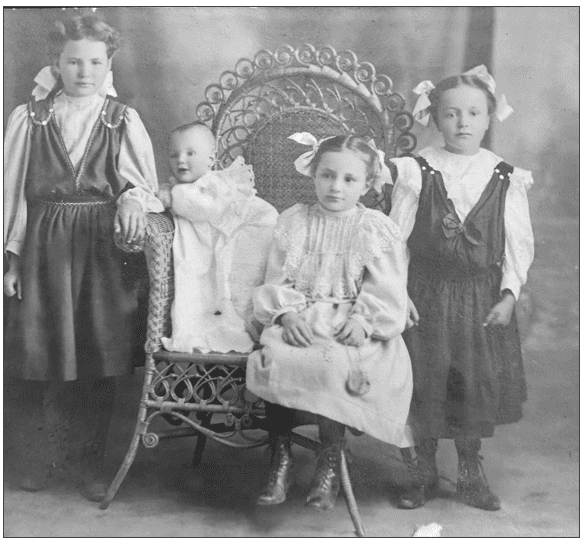
Erma Stumpf: b. November 27, 1897 – d. February 16, 1969
Edith Edna Stumpf: b. April 2, 1899 – d. November 5, 1983
Fern Stumpf: b. November 24,1900 – d. January ??, 1961
Alvin Stumpf: b. May 25, 1907 – d. July ??, 1972
******
Nora was born September 13,1879 and died March 9,1944.
Joseph was born February 25,1872 and died October 21, 1945.
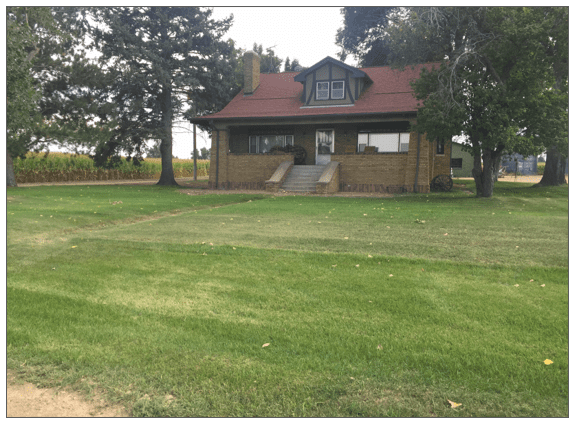
“J.H. Stumpf is building a fine, modern dwelling on his place southeast of town. The structure is of brick, eight rooms, full basement and will have all the latest conveniences.” Berthoud Bulletin October 21,1927
